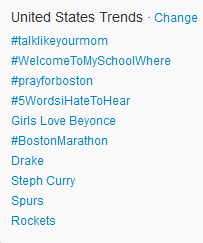 How common is online community?
How common is online community?
Well, there are something like 4 million or more businesses with brand pages on Facebook. However, only several thousand of these companies have more than a million fans. How many of these brand presences are true online community? Not nearly enough.
There’s a big difference between a company with a social media presence, and a company that’s managed to build a vibrant online community. Think to brands like marketer Gary Vaynerchuk, boot retailers Country Outfitters, and country singer Miranda Lambert. These are all examples of well-defined brands with some serious community. It’s not uncommon to see thousands of likes, shares, and comments on these Facebook pages.
Even if your brand doesn’t have the built-in visibility of a marketing or country music superstar, you can still build and maintain a strong sense of community. Communities are built around shared interests, high-quality content, and unique value. By providing a forum where your audience feels like they’re receiving exclusive, relevant information and a chance to share their opinions, you’ll be well on your way to a large fan base and serious engagement.
In this blog you’ll learn 15 quick tips for turning your company’s social media presence into a serious sense of community:
1. Acknowledge others.
Do it often. Make sure everyone in your community knows their contributions are valued. In the words of community expert Liz Ryan, “I don’t think anyone gets enough acknowledgement. Sharing thoughts and opinions via online community is one tiny way for people to connect.”
2. Provide Incentive
Providing rewards for engagement isn’t a new marketing tactic, but it’s a really effective one. Think of Social Media Examiner’s online communities, which award points and offer a leaderboard to recognize the most-engaged members.
3. Host Online Real-Time Events
Real-time events are always superior to engagement that occurs in social media time. Host, promote, and foster online events, which could be Twitter chats, Google+ hangouts, or more.
4. Convert Promoters into Active Moderators
Does your community have a couple of subject matter experts, who already engage well with others? Why not ask these individuals to become regular contributors and create content for your blog or community? This can open the door for more user-generated content marketing or even co-branding opportunities.
5. Be Positive and Authentic
Are you afraid that building a highly-active community could turn your online presence into a place known for negativity and snark? It’s possible, and it happens. However, entrepreneur Tim Weingarten recommends always approaching engagement with an attitude of “positivity and authenticity” to ensure your audience does the same.
6. Don’t Be Unreasonable
Asking your audience to share your picture? That’s fine, and it’s actually a fairly effective social media marketing tactic. Demanding continuously that your users share your picture for entry in a contest? That’s aggressive, and likely to kill any sense of budding camaraderie in your community.
7. Understand Your Core Demographic
Chances are, you know exactly who your brand’s customers are. It could be married women between the ages of 35-55, or another segment of the population. Each piece of content you post or question you ask should be tailored to this group’s unique needs and preferences.
8. Be Clear About Your Value
Social media branding is one thing, but community purpose is another (closely related) concept. When new fans land in your community, can they immediately tell what you’re about? Your unique value proposition (UVP) should be apparent within seconds. Consider the following UVP statements for online communities:
We’re a group of fashion-loving young professionals who search high and low for the best shoes
We’re seasoned accounting professionals who are committed to excellence in continuing education.
Who are your prospects, why are they there, and where are they trying to go? Through effective community branding and content, your message and mission should be apparent.
9. Define Your Audience’s Needs
Why are people liking your Facebook page or following your brand on Pinterest, anyway? Is it because you offer cutting-edge data analysis services, and post pretty graphs? If you haven’t taken the time to define the value individuals receive for being a member of your community, it’s critically important. Use this insight to define your community content strategy going forward.
10. Be an Expert
Not every social media manager is an expert on their industry. In many cases, you can fake knowledge (with the help of factors like an approved publication list for content curation). However, your brand’s respect and relationships will be infinitely better if your expertise shines through in content and engagement.
11. Know Your Limitations
Do you know when it’s appropriate to delete comments or block a member? These decisions can get pretty sticky, and it’s best for social media managers to have a well-defined plan in place for dealing with situations.
12. Let Your Community Build Itself
Your prospects may ask for more infographics or fewer posts. More likely, your engagement data will tell the story of what’s resonating among your audience. Listen, and respond quickly. You can’t grow a community if you ignore your social media metrics.
13. Trust People’s Opinions
If your community is hostile to new contributions from members, your engagement simply won’t grow. As a moderator, your job is to understand that you won’t always agree with people’s contributions, and that’s okay. Make it your job to create a space where everyone’s voice is heard.
14. Out with the Old
Do you have any dead material in your community? Empty YouTube channels, or dead forums? Maybe a LinkedIn brand page that’s completely wrong for your B2C prospects? If you have aspects to your online presence that aren’t serving you or your customers, it’s probably in your best interest to cut ties.
15. Build Time for Community Management
All too often, social media managers fail to move beyond creating engaging posts. Rich Millington of Feverbee recommends hiring a professional with dedicated community experience. If that’s not possible, provide your social media pros for time just for engagement.
Have you managed to build an active and engaged online community from the ground up? Share your successes, tips, and challenges in the comments!
header image credit: khalid albaih/flickr/cc
(197)









